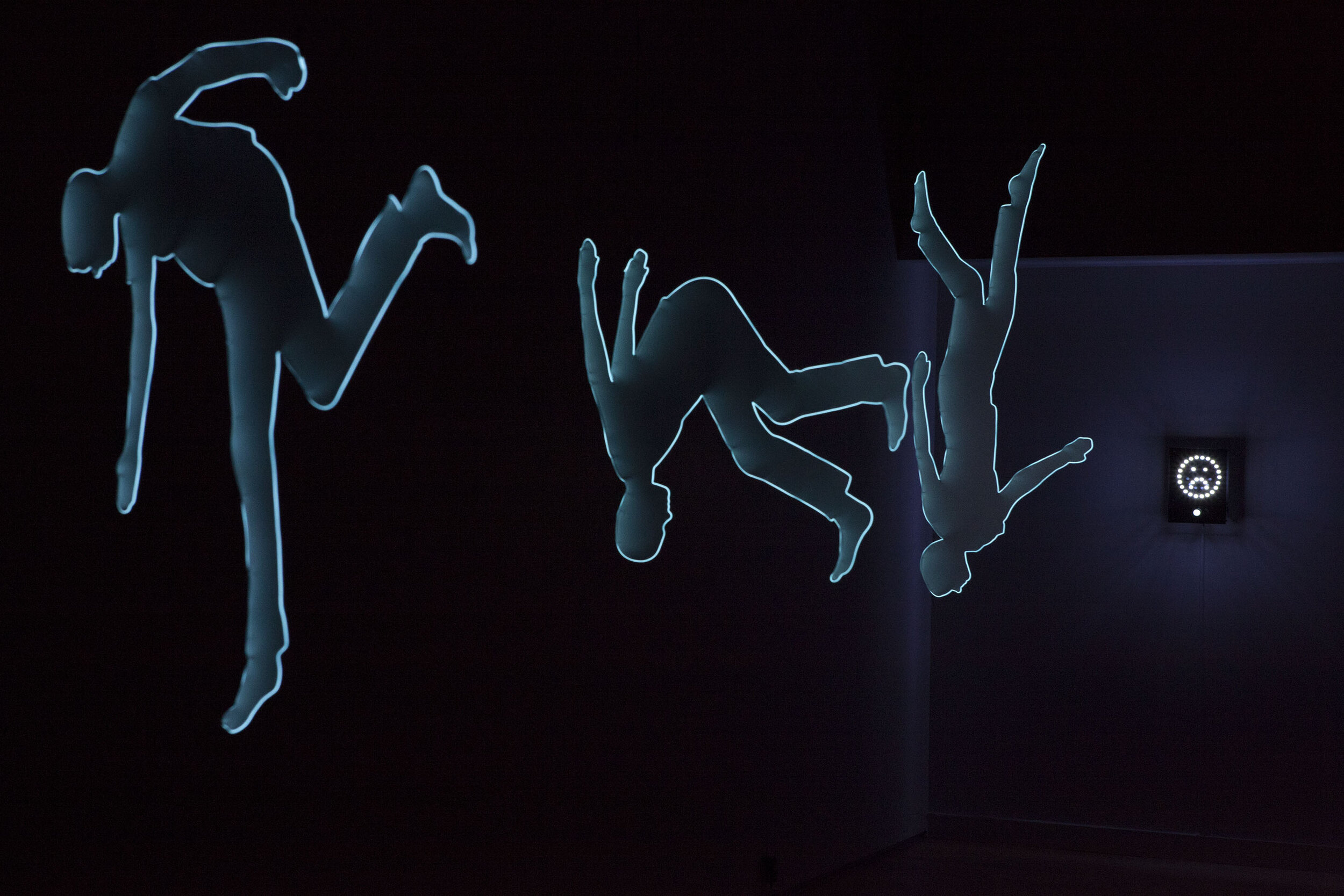
brouillard : corps et lumière
Light installations (2018)
The exhibition Brouillard : corps et lumière is made up of four installations that are in harmony with each other because they all use light as a medium and human body as a subject. It was presented in 2018-2019 in three Maisons de la culture in Montreal.
The four installations constituting Brouillard: corps et lumière respond to each other, without however contaminating each other in the exhibition space. Vecteur (2018) presents four acrylic human silhouettes in various falling positions, the outlines of which are illuminated by electroluminescent wires. The movement is deconstructed, illustrated at four points in a sequence, but nothing moves. These characters are anonymous and non-gendered, all we recognize is their lack of support, their downfall. Le Caisson à Brouillard (2012) also shows the outlines of a character, but this time in video, projected onto a layer of smoke, contained in a case with a translucent top. The image captured by the volatile and diaphanous surface appears as intangible, elusive. Push (2015) also uses a simple figure made up of a few pixels.These pixels light up together to create the universal symbol of happiness, the smiley face, but with an upturned mouth expressing what is collectively interpreted as sadness. An illuminated button located just below this sad face encourages the viewer to press. The viewer now has the power to reverse the expression on the face, turning sadness into happiness. We finally meet À l’∞ (2017), the fourth piece in this exhibition. The installation is made of a curved array of light-emitting diodes, rotating around a central point. A human form, androgynous, with indecipherable features, is drawn on this DIY screen. Sometimes crouching, sometimes walking proudly with raised arms, this pixel figure walks with a steady step and orbits around the center. As with Push, the work requires actions from the viewer: to experience the journey of the character, you have to follow its convolutions, rotate with him in the presentation space.
These works have in common characters, human forms concrete enough to identify with them, but neutral enough to project an interpretation: Is the fall depicted in Vecteur deliberate or accidental? Are the characters afraid of giving in to this lack of attachment? And this body in Le Caisson à Brouillard, is it captive or sheltered? And what explains these contrasting postural changes in À l'∞? This ambivalence of bodies and emotions permeates each of the pieces. Through these luminous works, the space is sculpted with contrasts and ambiguities that invite contemplation. More importantly, it is a space where extremes like light and darkness can coexist.
À L’∞ created with the support









